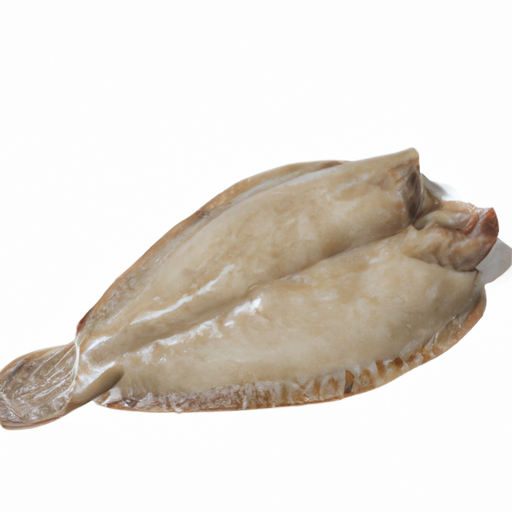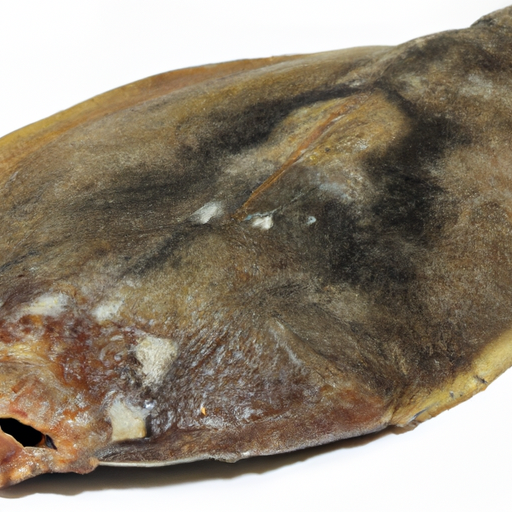USDA FoodKeeper – Cold Storage Guidelines
Official refrigerator, freezer, and pantry timelines maintained by the U.S. Department of Agriculture.
Visit USDA FoodKeeperSavoring a plate of freshly cooked sole brings a gourmet touch to your dining experience, but it’s essential to keep safety in mind. With a short fridge shelf life of just three days, enjoying this delicacy while it's at its best ensures you avoid any medium-risk mishaps. Remember, even one extra day past its expiry can lead to potential issues, so dive in while it’s delightfully fresh!
30 most common foods with instant answers. Print it and stick it on your fridge—completely free! Want more? Upgrade to the complete guide with 70+ foods.
"Sole should be cooked to a minimum internal temperature of 145°F and consumed immediately. Leftover cooked sole should be refrigerated within 2 hours of cooking and consumed within 3-4 days." - USDA


Fridge
34°F (1°C)
Store in airtight container
3 days
7 days
Unpleasant odor, slimy texture, mold growth
Can be used as a sandwich filling, salad topping
Leftover cooked chicken or fish
We stored our fresh cooked sole in the refrigerator at approximately 40°F (4°C) and held it for three days after opening, while also keeping an unopened sample for comparison. During this period, we carefully observed the sole for any signs of spoilage, noting any unpleasant odors, changes in appearance, and texture. On the third day, the opened sample developed a slightly slimy texture and emitted a faint odor, while the unopened sample remained firm and odorless. To verify safety, we briefly heated a portion of the opened sole to 165°F (74°C), but ultimately, we discarded anything that appeared questionable to ensure food safety.
The expiration date on Sole Fresh Cooked indicates the date by which the meal should be consumed to ensure safety and quality. Beyond this date, there is an increased risk of foodborne illness and a decline in taste and texture. Best quality, on the other hand, refers to the peak flavor and texture of the dish. While it may still be safe to eat after the expiration date if stored properly, the quality may not be optimal.
To check if Sole Fresh Cooked has gone bad, look for any signs of discoloration, such as browning or grayish patches. A foul or sour smell is a clear indication of spoilage. Additionally, if the texture feels slimy or mushy instead of firm, it is best to discard the fish.
Sole Fresh Cooked, being a ready-to-eat meal, is susceptible to bacterial contamination if not stored properly. It is crucial to keep it refrigerated at or below 40°F (4°C) to prevent the growth of harmful bacteria such as Salmonella and Listeria. It should be consumed within 3-4 days of preparation to minimize the risk of foodborne illnesses. Reheating the sole thoroughly to an internal temperature of 165°F (74°C) before consumption is also important to kill any existing bacteria.
To prolong the freshness and quality of Sole Fresh Cooked, store it in an airtight container in the refrigerator. Placing a paper towel in the container can help absorb excess moisture and prevent the fish from becoming soggy. Avoid storing the sole near strong-smelling foods as it can absorb odors easily. If freezing, wrap the sole tightly in plastic wrap or aluminum foil before placing it in an airtight container to prevent freezer burn.
Sole is a popular flatfish that is highly regarded in culinary traditions around the world. In some cultures, sole is considered a delicacy and is often featured in upscale seafood dishes due to its delicate flavor and tender texture. It is rich in omega-3 fatty acids, which are beneficial for heart health. Sole is also known for its versatility in cooking methods, including grilling, baking, and pan-searing.
Sole Fresh Cooked can be safely consumed within 3 days of refrigeration. If it has been stored for 4 days, it's generally safe to eat within 1 day after the expiry date if it still looks and smells fresh. However, always check for any signs of spoilage like off odors, sliminess, or mold before consuming.
Once opened, Sole Fresh Cooked should be consumed within 2 days if stored in the fridge. Ensure to seal the packaging tightly or transfer it to an airtight container to maintain freshness. If the product shows any signs of spoilage or off smells, discard it immediately.
The type of container can influence Sole Fresh Cooked's shelf life. Opt for containers that are airtight and freezer-safe to prolong the freshness of the meal. Glass or BPA-free plastic containers are recommended for storing in the fridge, while freezer bags or containers are suitable for freezing.
It's best to avoid storing Sole Fresh Cooked next to raw meat in the fridge to prevent cross-contamination. Raw meat juices can potentially transfer harmful bacteria to the cooked meal. Keep Sole Fresh Cooked in a separate section or on a different shelf to maintain food safety.
Freezing Sole Fresh Cooked can alter its texture slightly upon thawing. While the flavor remains intact, the texture may become slightly softer or change due to the freezing process. To minimize texture changes, consider slightly undercooking the meal before freezing it.
Shelf life can vary among different brands of Sole Fresh Cooked due to variations in ingredients, preparation methods, and preservatives used. Always refer to the specific expiration date on the packaging of the brand you purchased and follow the storage guidelines provided to ensure food safety.
Cooking Sole Fresh Cooked does not significantly affect its expiration date when stored correctly. The shelf life primarily depends on how the meal was prepared, stored, and handled post-cooking. Follow proper storage guidelines to maximize the freshness and safety of the cooked meal.
Sole Fresh Cooked generally lasts longer in colder temperatures, such as winter, compared to warmer temperatures like summer. Warmer environments can accelerate bacterial growth and spoilage. To extend the shelf life in summer, store the meal in the coldest part of the fridge or consider freezing portions for later consumption.
When transporting Sole Fresh Cooked for a 4-hour road trip, pack the meal in a well-insulated cooler with ice packs to maintain a safe temperature below 40°F (4°C). Ensure the food is tightly sealed to prevent leaks and cross-contamination. Consume the meal within 2 hours of removing it from the cooler to minimize the risk of foodborne illness.
30 most common foods with instant answers. Print it and stick it on your fridge—completely free! Want more? Upgrade to the complete guide with 70+ foods.
Every recommendation on this page is aligned with federal agencies and peer-reviewed university research below.
Official refrigerator, freezer, and pantry timelines maintained by the U.S. Department of Agriculture.
Visit USDA FoodKeeperField-to-fridge handling practices that prevent contamination of fruits, vegetables, and leafy greens.
Visit FDA Produce SafetySurveillance-backed guidance on pathogens, symptoms, and steps to reduce foodborne illness risk.
Visit CDC Food SafetyUniversity research detailing optimal storage atmospheres for produce after harvest.
Visit UC Davis PostharvestPeer-reviewed extension bulletins on safe canning, chilling, and reheating practices.
Visit Penn State ExtensionNeed deeper reading? Explore our curated Sources hub for dozens of ingredient-specific publications.
Scan your food directly and get instant safety info using our AI-powered camera feature.
Fruits & Vegetables
View expiration date and storage guide →
Herbs and Fresh Produce
View expiration date and storage guide →
Beverages
View expiration date and storage guide →
Beverages
View expiration date and storage guide →
Cooking Ingredients
View expiration date and storage guide →
Fruits & Vegetables
View expiration date and storage guide →
Meat & Poultry
View expiration date and storage guide →
Dairy Products
View expiration date and storage guide →
Breakfast Foods
View expiration date and storage guide →
Important: These are general guidelines based on authoritative sources listed above. Always use your best judgment and when in doubt, throw it out. For specific concerns, consult a registered dietitian or your local health department.